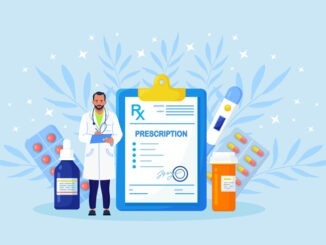
A quick go-to guide for prescribing in general practice
All prescriptions have the same basic requirements which include:
All prescriptions must:
- Bear the name and address of the patient.
- Be written, or printed, legibly in ink.
- Be signed in indelible ink.
- Have an appropriate date.
- Bear the address of the prescriber.
- State the age of a child if under 12.
Details of the medicine to include:
- Name of medicine.
- Form.
- Strength.
- Directions for use.
- Quantity to be supplied.
Community drug charts
There is no need for a GP to complete a community drug chart (MAR chart).
Drug switches
Some practices will have received an instruction to change patients on drug X to drug Y to save the primary care organisation (PCO) money. If it is reasonable to switch a patient, then practices may agree to do so.
Excessive prescribing
Excessive prescribing is defined within the GP contract. Any health professional believed to be prescribing excessively may be challenged by their PCO.
Prescribing incentive schemes
Prescribing incentive schemes are implemented in some areas to reward practices for cost-effective prescribing. GPs should be aware of the costs involved and ensure ethical consideration when signing up to schemes.
Prescribing numbers
Salaried GPs can request their own prescribing number via PCSE online. You will also need to go log onto PCSE online to notify NHS England of any changes to your status if you move practices – see more on how to do this.
Prescription charges
The prescription charge in England is £9.15 per item. People with certain medical conditions, including cancer, may get free NHS prescriptions.
Supplementary and independent prescribing
Supplementary prescribing is a voluntary partnership between an independent prescriber and a supplementary prescriber (a trained nurse, midwife, pharmacist, physiotherapist, diagnostic and therapeutic radiographer, or optometrist).
Doctors’ responsibility for independent prescribers
All independent prescribers should ensure they have professional indemnity, and the employing GP should be satisfied that any employee has the relevant skills and training.
Non-GP long-term prescribing
When a non-GP prescriber initiates a new drug, they accept responsibility for that prescription. They usually can’t issue repeats.
If a patient wishes to repeat their prescription, the GP should review the patient and set up a repeat prescription, if appropriate, or refer the patient back to initial prescriber.
The patient’s GP should be notified if anything is prescribed long-term. The responsibility for checking interactions is with the prescriber, who should take a full drug history if they do not have access to the main clinical record.



Be the first to comment